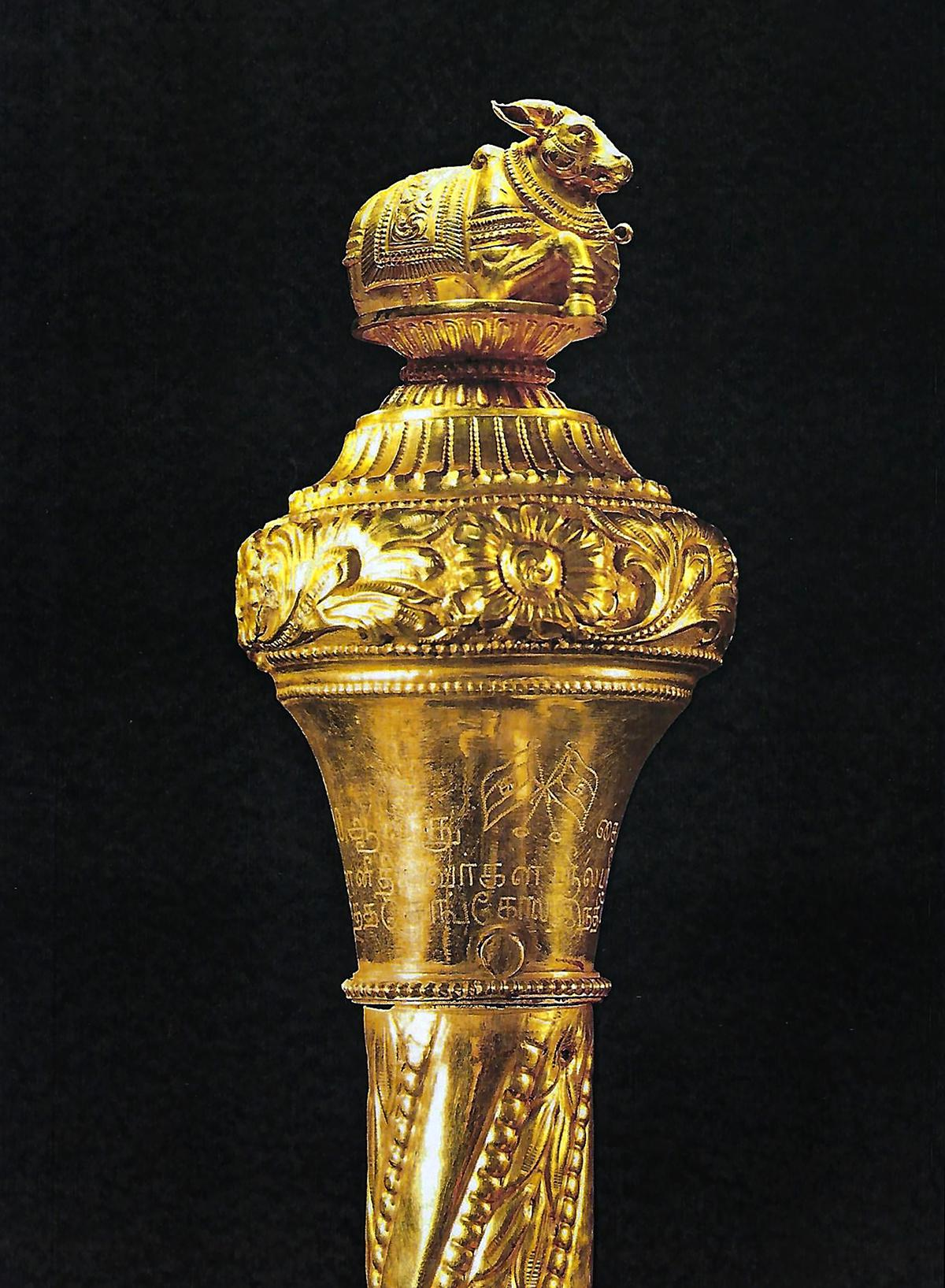Indian Heritage & Culture
Sengol to be Installed in New Parliament Building
- 25 May 2023
- 6 min read
For Prelims: Central Vista redevelopment project, Parliament, Sengol, Chola Empire, Governor-General of India, Union Budget 2022-23.
For Mains: Historical Significance of Sengol.
Why in News?
On May 28th 2023, the Prime Minister will inaugurate the new Parliament building, which is part of the Central Vista redevelopment project.
- One of the highlights of the event will be the installation of a historic golden sceptre, called Sengol, near the Speaker’s seat.
- The Sengol is a symbol of India’s independence and sovereignty, as well as its cultural heritage and diversity.
What is the Historical Significance of Sengol?
- The Sengol is profound in meaning, derived from the Tamil word “Semmai”, it means “Righteousness”. It was made of gold or silver and was often decorated with precious stones.
- A Sengol sceptre was carried by emperors on ceremonial occasions, and used to represent their authority.
- It is associated with the Chola Empire, one of the longest-ruling and most influential dynasties in South India.
- The Cholas ruled over parts of Tamil Nadu, Kerala, Karnataka, Andhra Pradesh, Telangana, Odisha, and Sri Lanka from the 9th to 13th century CE.
- They were known for their military prowess, maritime trade, administrative efficiency, cultural patronage, and temple architecture.
- The Cholas had a tradition of handing over the Sengol sceptre from one king to another as a mark of succession and legitimacy.
- The ceremony was usually performed by a high priest or a guru who blessed the new king and conferred him with the Sengol.
How did Sengol Become a Part of India’s Independence?
- Before independence from the British rule in 1947, the then Viceroy - Lord Mountbatten posed a question to the to-be Prime Minister Jawaharlal Nehru: “What is the ceremony that should be followed to symbolise the transfer of power from British to Indian hands?”
- PM Nehru then consulted C. Rajagopalachari, commonly known as Rajaji, who went on to become the last Governor-General of India.
- Rajaji suggested that the Chola model of handing over the Sengol sceptre could be adopted as a suitable ceremony for India’s independence.
- He said that it would reflect India’s ancient civilisation and culture, as well as its unity in diversity.
- The Sengol sceptre was presented to PM Nehru by Thiruvavaduthurai Adheenam (a 500-year-old Saivaite monastery) on August 14, 1947.
- PM Nehru then consulted C. Rajagopalachari, commonly known as Rajaji, who went on to become the last Governor-General of India.
- A golden sceptre was crafted by Vummidi Bangaru Chetty, a famous jeweller in Madras (now Chennai).
- The Nandi, with its unyielding gaze as the beholder of “Nyaya”, is hand-carved at the top.
Where is Sengol Now and Why is it Being Installed in the New Parliament Building?
- After receiving the Sengol sceptre in 1947, Nehru kept it at his residence in Delhi for some time.
- He then decided to donate it to Anand Bhavan Museum in Allahabad (now Prayagraj), his ancestral home.
- The museum was established by his father Motilal Nehru in 1930 to preserve the history and legacy of India’s freedom movement.
- The Sengol sceptre remained at Anand Bhavan Museum for over seven decades.
- He then decided to donate it to Anand Bhavan Museum in Allahabad (now Prayagraj), his ancestral home.
- In 2021-22, when the Central Vista redevelopment project was underway, the government decided to revive this historical event and install the Sengol sceptre in the new Parliament building.
- It will be placed near the Speaker’s seat in the new Parliament building and will be accompanied by a plaque that will explain its history and meaning.
- The installation of Sengol in the new Parliament building is not just a symbolic gesture but also a meaningful message.
- It signifies that India’s democracy is rooted in its ancient traditions and values and that it is inclusive and respectful of its diversity and plurality.
What is the Central Vista Redevelopment Project?
- The Central Vista Redevelopment Project is a project that aims to revamp the Central Vista, India’s central administrative area located near Raisina Hill, New Delhi.
- The area was originally designed by Sir Edwin Lutyens and Sir Herbert Baker during British colonial rule and was retained by Government of India after independence.
- In Union Budget 2022-23, the Ministry of Housing and Urban Affairs was allocated an amount of Rs 2,600 crore for the construction of non-residential office buildings of the ambitious Central Vista project, including the Parliament as well as the Supreme Court of India.







